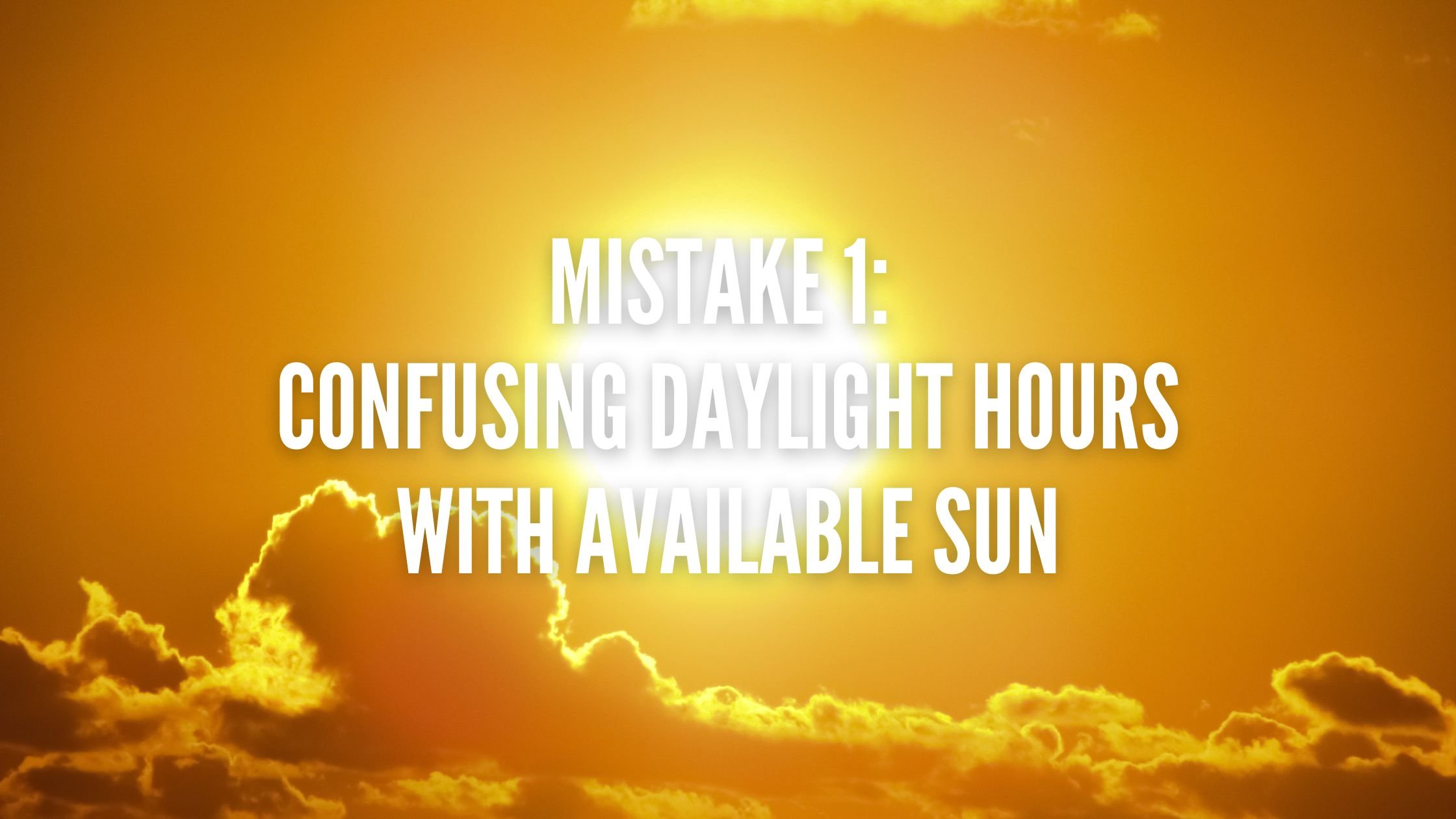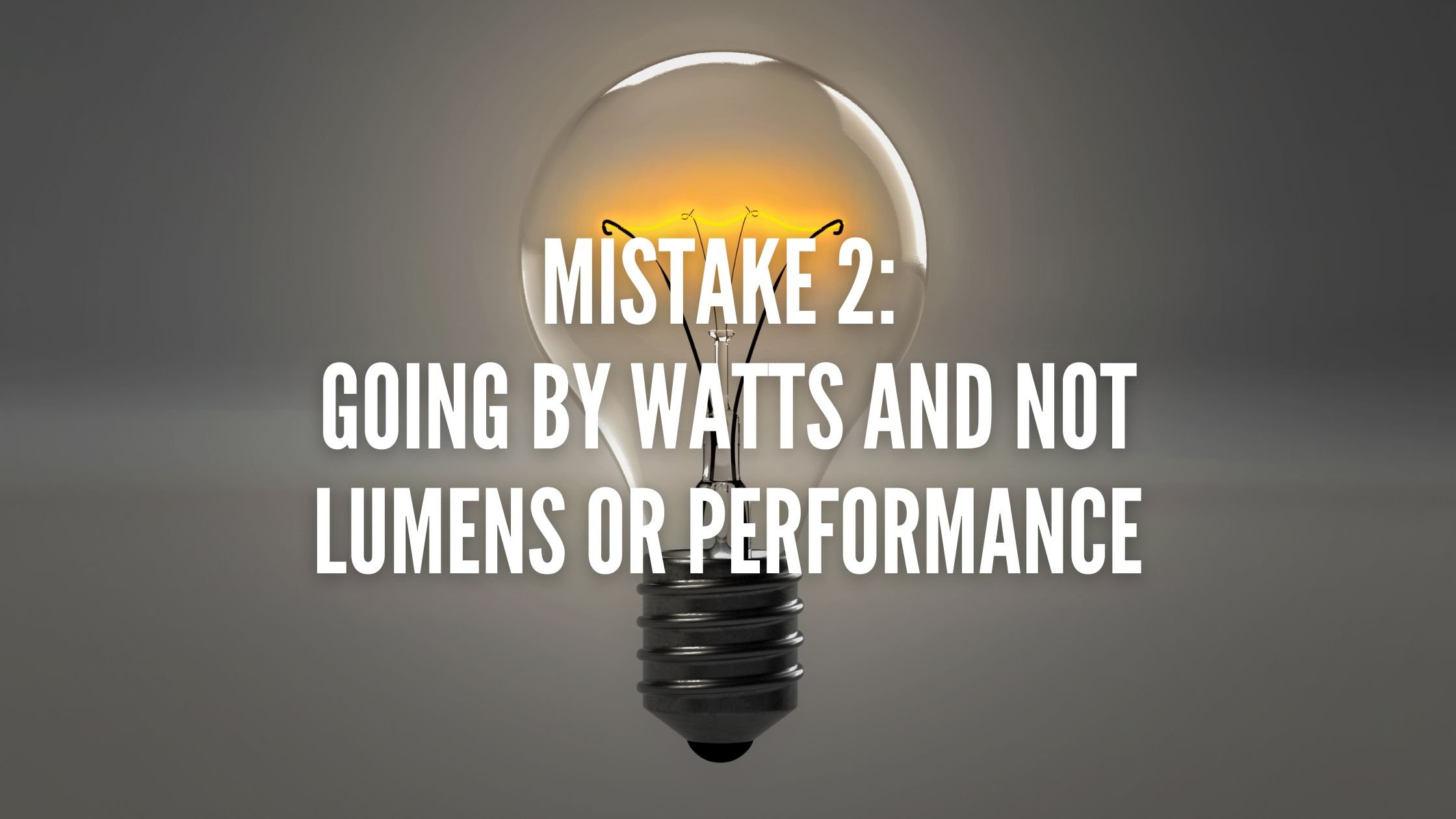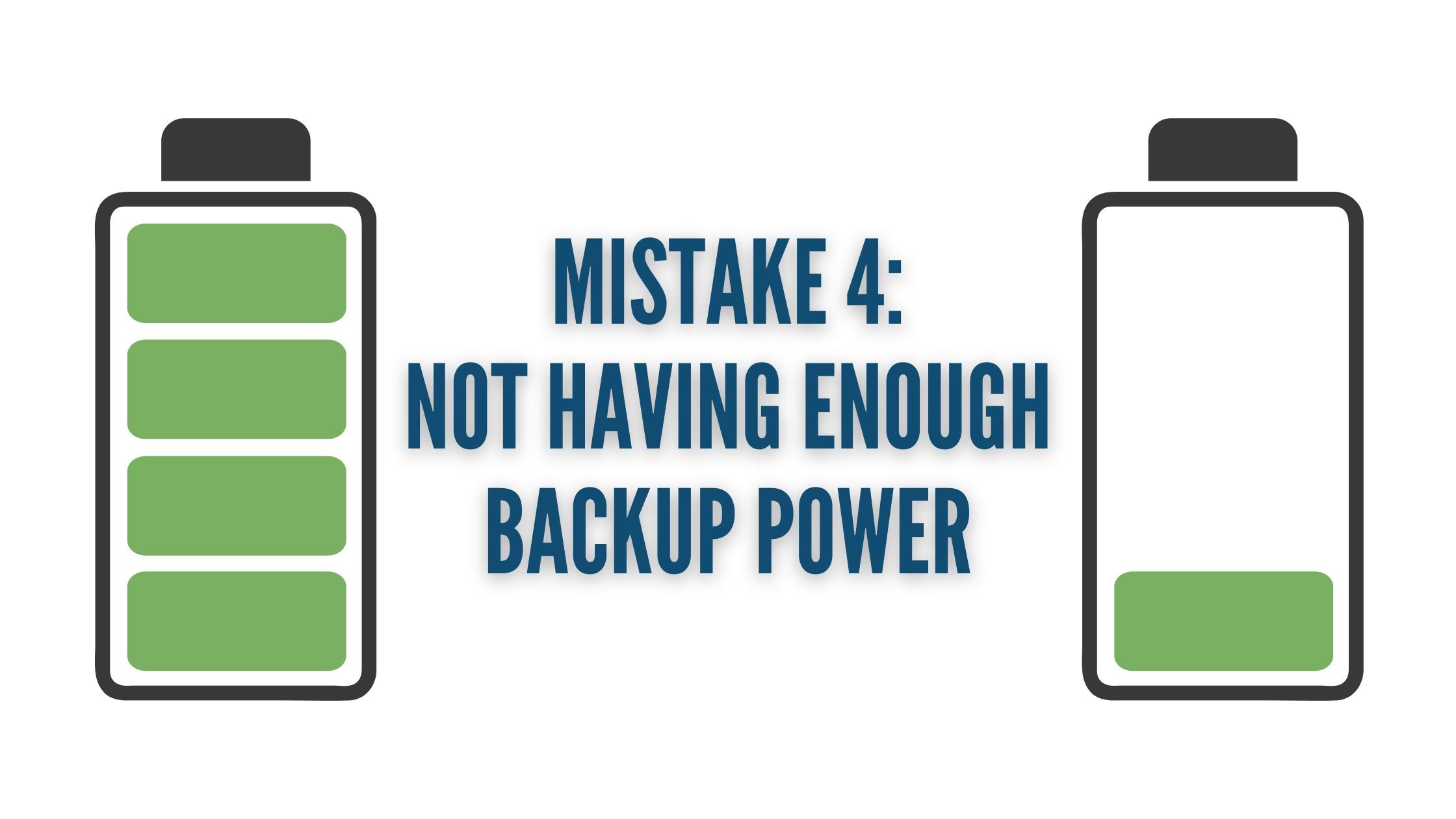5 Mistakes when Comparing Outdoor LED Solar Powered Lights
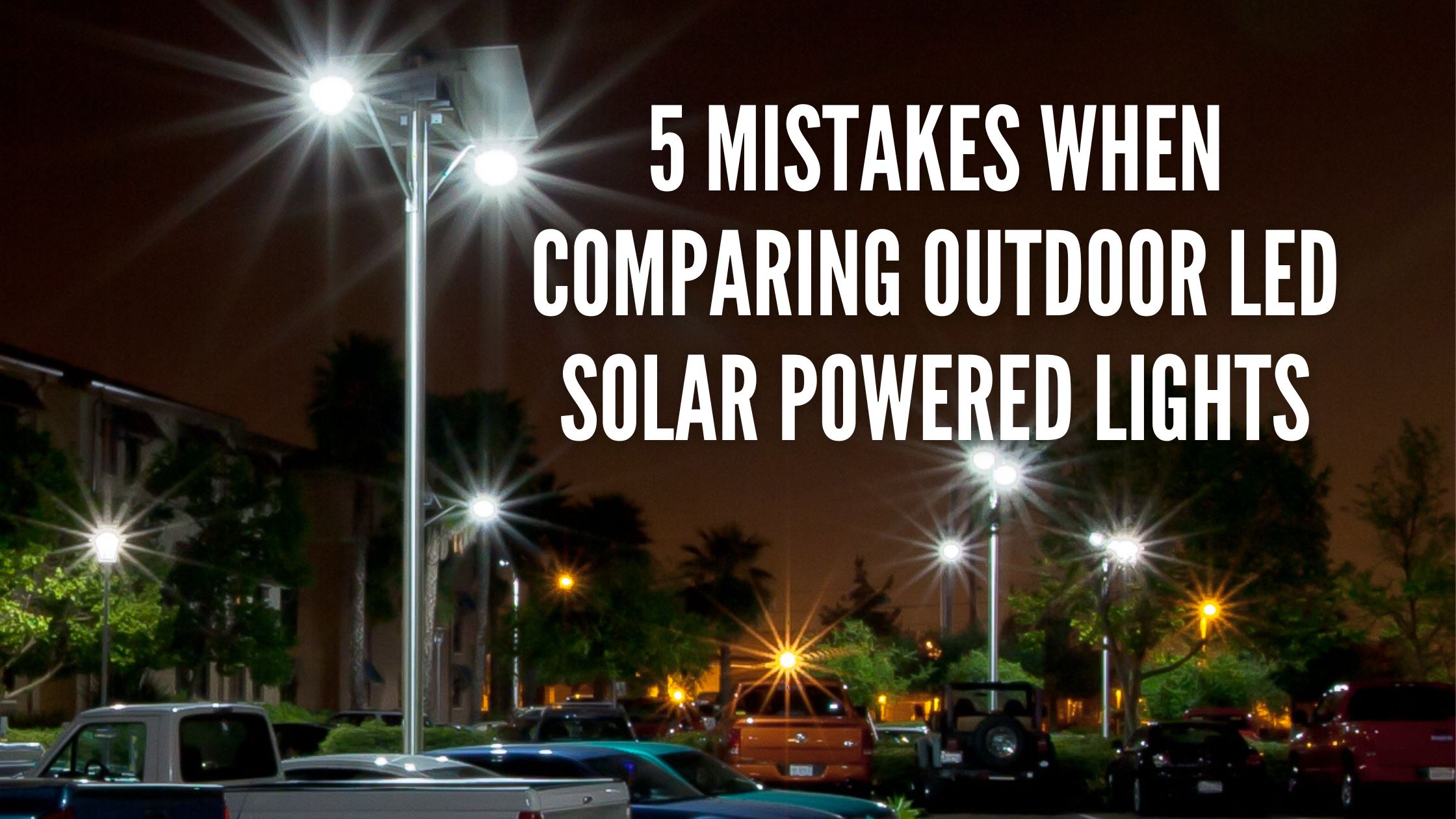
Contents
Outdoor LED solar powered lights are a great way to illuminate an area without having to deal with running additional utility lines. The solar powered lights charge from the sun during the day, storing the energy in a battery assembly, then use the stored energy to operate at night. The lights can be programmed to run multiple ways and provide light all night, or only for a set period.
All this may seem very simple, but many mistakes are common in the outdoor LED solar powered light industry. These mistakes range from misinformation by unethical and shady manufacturers to not understanding the industry lingo. Let's take a closer look at these mistakes and how to circumvent them, so you don't fall short in your lighting needs.
Mistake 1: Confusing Daylight Hours with Available Sun
When looking through specifications provided by various companies, I see a common theme: there is confusion between daylight hours and available sun. Let's look at the differences and why this is super important with solar design.
What is a sun hour?
Daylight hours are the number of hours of daylight that are required to charge the system; however, this information is very deceiving. Instead, sun hours should be used when sizing up a solar solution.
A solar sun hour is the amount of full power sun available in a location during a specific time. Sometimes averages are used, like for grid integrated systems, and other times you would need the worst-case scenario information like used with off-grid systems.
Full power sun means that at 9 am, the sun is just starting to shine fully, and depending on the angle of the solar panel, it can start to produce 10% of a charge; however, later at solar noon, the panel is producing 100% charge. Then as the day goes on, the charge percentage reduces until dark.
The number of sun hours is the amount of 100% charge throughout the day. In some northern climates, this can be as little as 1 all the way to sunny areas such as New Mexico, which can have over 5 sun hours. This number is used for system sizing for off-grid systems and only considers the worst-case scenario. Averages are only used for grid intertied systems.
Why is understanding sun hours important?
If you have a system that requires 3 sun hours to fully charge, but you have a system that is sized for 5 sun hours, the system will begin to fail during the fall and will be problematic by winter. This increase in failures, especially to completely draining the batteries, will reduce the system's lifespan, leave people in the dark, and in some cases, increase liabilities.
Say you have a light that is operating from dusk to dawn for safety and security purposes. The light has been determined to draw 50 Watts and you are located in Denver, CO, which has 4.21 sun hours and a 14.15 hour night. This fixture uses around 60 amps per day, requiring around 17 amps from the solar panel to provide enough of a charge to recharge the batteries from the previous night completely. In addition, some overages are calculated due to panel degradation to ensure that the same operation will happen 20+ years later.
In the same system for St. Paul, MN, where the December sun is only 2.2 sun hours, the requirement from the solar panel goes up to just over 32 amps from the solar to recharge the batteries. The number of amps required by the light fixture didn't change, but the sun hours did, by a lot too.
Why do different locations have different sun hour values?
The amount of sun varies due to many factors that are all considered when determining the sun hours, all determined by a 3rd party source such as NREL or National Resources Canada. These sources assess the amount of sun, both averages and monthly, that should be used in renewable energy calculations. The information is acquired through multiple data sources, global climate data from NASA, and more, and then combined to create the data most reputable manufacturers use.
Northern locations have a lot more sun in the summer but very little in the winter. On the flip side, the southern hemisphere has more sun in winter and less in summer. This is all due to the tilt of the earth, where it is located along the path around the sun, and so much more.
Daylight hours take none of this data into account and just use arbitrary numbers to say, "if you get 6 hours of sunlight, the system will charge." However, this information is inaccurate and does not consider the amount of charge the panel will produce, the angle at which the panel is set, and the direction the panel is oriented to (I mean south is obvious, but also missed), the location of the sun on the horizon, and so much more.
Understanding this mistake and how you can look for accurate information will ensure you are purchasing a solar lighting system that is sized appropriately for your installation. Will it charge fully to ensure you are never left in the dark? Will it operate at night as expected or leave you short on charge? Ensuring your system will always shine, especially when you are liable for someone's safety, is essential.
Mistake 2: Going by Watts and not Lumens for Performance
Every solar lighting system has its own set of data points that it uses to show performance. Asking for a 30 Watt light from various manufacturers will give you a different outcome every time. What optics are being used? What is the LED lumen per watt rating? What is the CRI or CCT of the LED? How does the light spread on the fixture work? Are there hot spots or does the fixture cause light pollution? There are so many things to consider than just the wattage of the fixture.
Then what is a watt?
A watt is the amount of energy the light fixture or device uses. One watt means that the item uses one watt per hour, no matter the type of power it uses. This means that something that draws 30 watts only states the amount of power it requires. This definitely doesn't make two of the same wattage fixtures the same except for how much power they draw.
What is a Lumen?
A Lumen is the representation of the amount of light emitted by a source of light. This is where things become a little more equal. Two fixtures with the same number of Lumens, say 5000 Lumens, have the same light output. This still doesn't mean that they produce the same light per se, but it is a much more similar way to look at things.
Why look at performance?
The fixture's performance considers all the factors, including watts and Lumens, to determine how much light it puts out of the fixture. It also looks at the optics that are being used, as well as the color of the light.
Having a company complete a lighting analysis on a project will ensure you get enough light to produce the correct coverage required for the site. This can include a small area, such as a sign or bus stop, to a large area, such as a highway or parking lot.
The performance also tells you if there will be any dark areas or bright spots that you have to contend with. Maybe the spacing needs to be adjusted, the optics changed, or some other factor must be adjusted to illuminate the area correctly. All of this can be determined by looking at the fixture's performance and having the site analyzed by a professional.
Mistake 3: 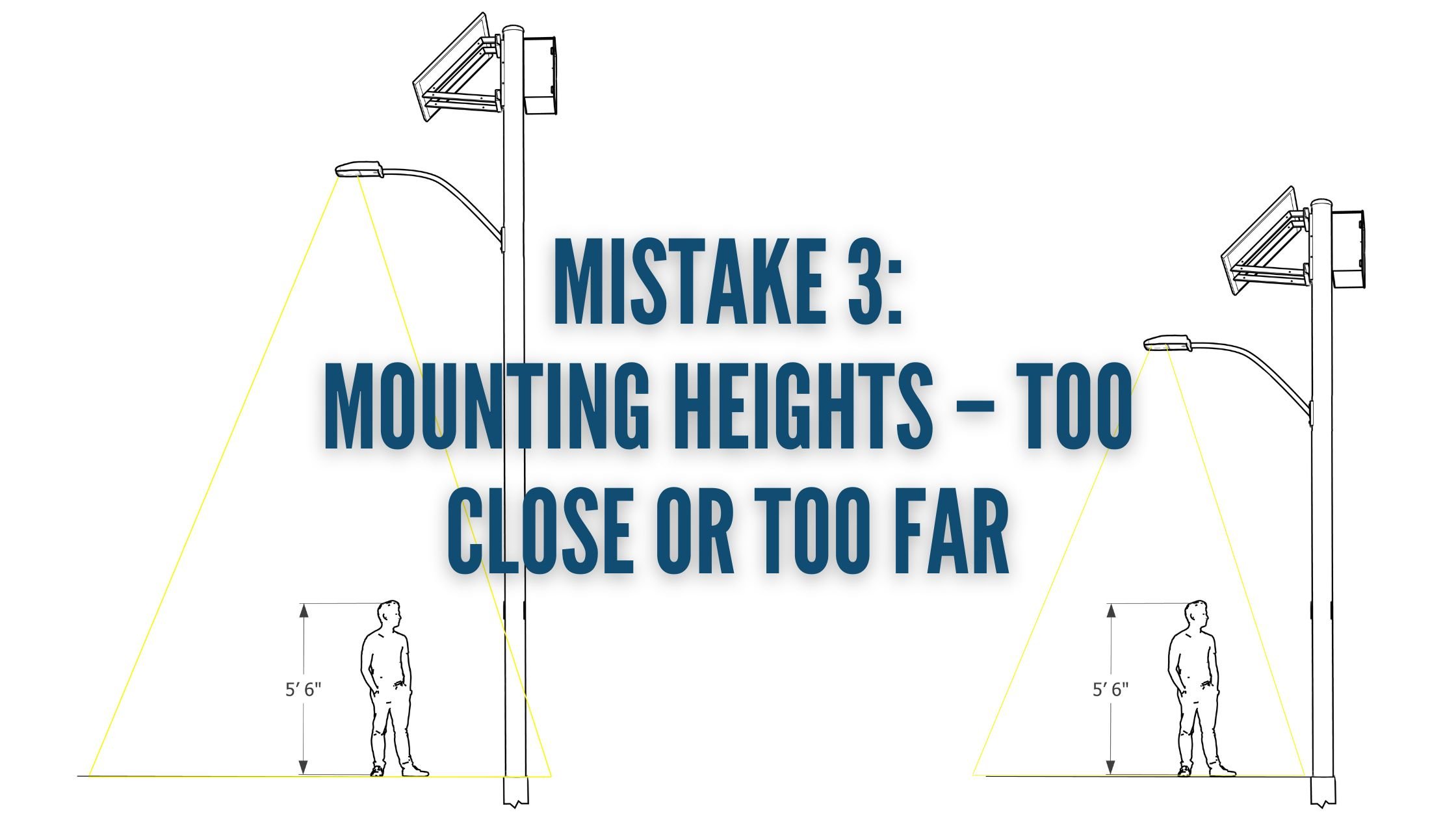 Mounting Heights – Too Close or Too Far
Mounting Heights – Too Close or Too Far
I don't know how many times I have had a request for a 60 Watt light mounted at 12' above grade. Are you cooking at this location? Why do you need so much light concentrated in such a small area? I know back in the day a 60 Watt light wasn't that much light because of old incandescent technology, but with LEDs and good optics, there is no need for that much light in many cases.
I've also seen the flip side where the company wants a light mounted at 30' and wants it to be solar; however, the installation location doesn't require or can't support the load to operate a fixture mounted that high.
Flashlight Analogy
My favorite way to explain mounting heights is by using a flashlight analogy. Take a flashlight, turn it on, and have it 1' away from a wall. The amount of light is very concentrated in a small area. Now start to move away from that wall and see how the light changes, how the coverage area grows, but the light is now more spread out and not as concentrated in one spot. This is the same way mounting heights work.
Depending on the light level requirements, usually stated in units such as foot candles or lux, and using max to min and average to min ratios, you can better determine what is required. Plus, as stated in the previous mistake, a Watt is only the power requirement and not the actual light output. So a 60 Watt fixture mounted at 12' could look much different depending on the CRI/CCT, Lumen per Watt ratio, optics, etc. that are used.
Mistake 4: Not Having Enough Backup Power
One of the worst mistakes you can make with any off-grid solar system is not having enough backup power stored in the batteries. This means that if there isn't a perfectly sunny day, the system may have failures that night. Instead, having a minimum of three nights with a lithium option and a minimum of five nights for an AGM or GEL battery setup ensures there is plenty of backup power for times of inclement weather. This also prolongs the life of the batteries, making the maintenance/replacement go from every year or two to 5-10 years.
Winter vs Summer Operation
In the summer, the nights are shorter and the days are longer, producing an overabundance of solar energy. However, in the winter, the nights can be very long. Not having enough backup power stored for these long nights will cause the system to not operate correctly during these times.
Also, sizing the battery storage too small to handle the depth of discharge changes in cold or hot climates can also cause failures. Did you know that most Lithium batteries have an operating temperature range of 0°C - 55°C, while a GEL / AGM battery operates from -40°C - 50°C. That means if you stick a Lithium battery in a cold climate, the system will not operate once the cold sets in.
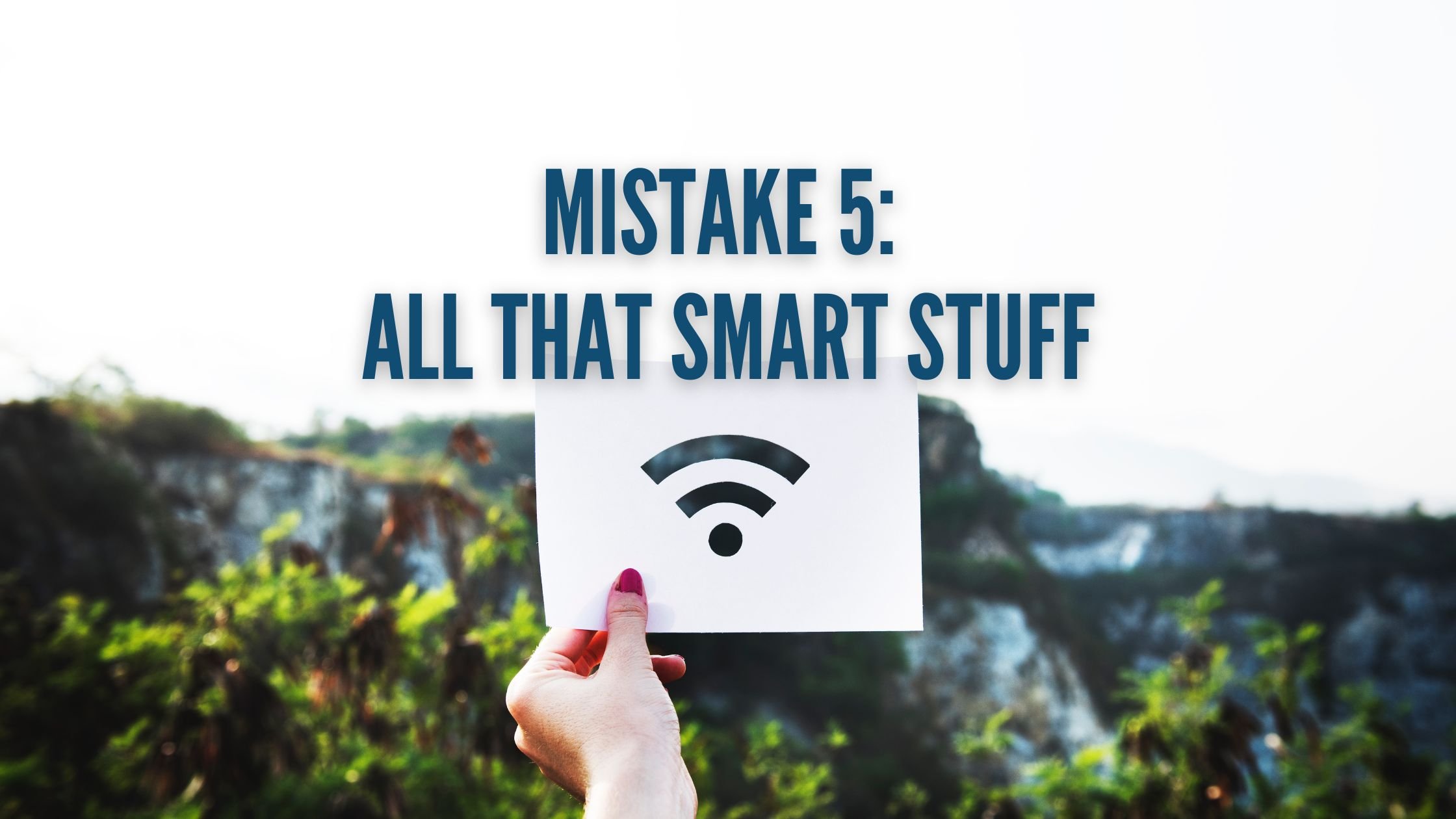 Mistake 5: All That Smart Stuff
Mistake 5: All That Smart Stuff
We are getting increasingly surrounded by smart electronics and interconnectivity, such as our smartphones and hubs; however, when it comes to lighting, sometimes it just seems overkill. Plus, it allows many companies to hide vital information about their products from the consumer because they label it smart.
What does dusk to dawn mean really?
We constantly hear how the lights need to operate from dusk to dawn, but then the client comes back stating they found a solution with only a 10% output for the night with some motion sensing or smart technology that brings it back to full output.
Does this light stay on from dusk to dawn? Technically yes! However, this is not what dusk to dawn really means.
Dusk to dawn means that the light will operate as it is supposed to from dusk until dawn, maintaining the specified light output. So if you need 6000 Lumens from dusk to dawn, allowing for 60 Lumens all night with only an hour or two of 6000 Lumens operation using a motion sensor is way different.
If motion and dimming are allowable, the designer should tell this at the start of the project design phase. This way everything can be taken into account, and you can compare apples to apples instead of a massive solar light compared to those all-in-one units.
Why smart controls are complicating the industry
Smart controls allow companies to hide vital information about their systems. They tend to undersize the batteries or solar to save money and make their systems cost less, but in the end, the systems fail and end up not lasting very long. Worst of all, many companies don't even last more than 10 years, less than their warranties, leaving customers in the dark.
Why KISS is important
Keep It Simple Stupid – KISS is a great way to look at a solar lighting solution. As things become smarter or more complicated, they get more difficult to maintain. Instead, having a light that operates as needed without all the complicated controls will make the light more reliable. Every piece of added technology or electronic only provides a new failure point that can have problems down the line.
As you can see, there are many ways that information can be construed to cause miscommunication and misinformation to be presented in the solar lighting industry. Understanding where common mistakes are made and how to circumvent them is key to ensuring you purchase and install a system that will last and provide a good return on your investment.
Always speak to your lighting representative if you have questions about the system you are specifying, and even reach out to manufacturers when additional clarifications or technical details are required.

